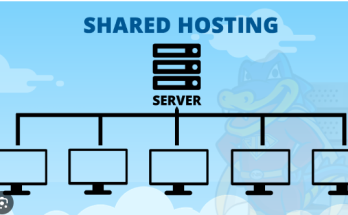Introduction:
Welcome readers to the detailed exploration of DreamHost’s hosting capabilities. In this guide, we’ll delve into the specifics of how many websites you can host on DreamHost, helping you make informed decisions about your online presence.
Understanding DreamHost Plans:
Shared Hosting Plans:
- Explain the concept of shared hosting and its limitations regarding the number of websites. Discuss the range of shared hosting plans DreamHost offers and the number of websites allowed on each plan.
Virtual Private Servers (VPS):
- Explore the VPS hosting options available on DreamHost. Describe how VPS plans differ from shared hosting in terms of website allowance.
Dedicated Servers:
- Detail the capacity of dedicated server plans in hosting multiple websites. Explain the advantages and limitations of dedicated hosting in this context.
Factors Influencing Website Count:
Resource Allocation:
- Discuss how resource allocation affects the number of websites you can host. Highlight CPU, RAM, and storage considerations in relation to hosting multiple websites.
Traffic and Performance:
- Explain the impact of website traffic on hosting multiple sites. Discuss how DreamHost’s plans handle varying levels of website traffic and performance demands.
Optimizing Website Allocation:
Domain Management:
- Guide readers on effectively managing multiple domains within a single hosting account. Discuss adding domains, setting up subdomains, and utilizing domain management tools provided by DreamHost.
Performance Optimization:
- Offer tips and best practices for optimizing website performance when hosting multiple sites. Discuss caching, content delivery networks (CDNs), and other optimization techniques.
Scaling and Future Considerations:
Scalability Options:
- Explore DreamHost’s scalability options for users aiming to expand their online presence. Discuss upgrade paths and additional resources for accommodating growth.
Considerations for Growing Websites:
- Advise readers on things to consider as their websites grow, such as monitoring resource usage, managing traffic spikes, and scaling resources accordingly.
Conclusion:
Summarize the key points discussed in the article, emphasizing the flexibility and scalability of DreamHost’s hosting plans for hosting multiple websites. Encourage readers to assess their specific needs and choose the plan that best fits their requirements.
Understanding DreamHost’s Hosting Plans
DreamHost provides several hosting options, including Shared Hosting, Managed WordPress Hosting, VPS Hosting, and Dedicated Hosting. The number of websites you can host largely depends on the plan you choose.
1. Shared Hosting Plans
Step 1: Selecting the Right Plan
DreamHost’s Shared Hosting plans are suitable for beginners and small to medium-sized websites.
Step 2: Number of Websites Allowed
The Shared Starter plan typically permits hosting for a single website, while the Shared Unlimited plan allows hosting an unlimited number of websites under one account.
Step 3: Consider Resource Usage
Despite offering unlimited websites on the higher-tier plan, resource usage (like storage and bandwidth) might still have limitations. Keep an eye on these to ensure optimal performance.
2. Managed WordPress Hosting
Step 1: Choosing the Plan
DreamHost’s Managed WordPress Hosting focuses on WordPress-based websites and provides various tiers.
Step 2: Number of Websites Allowed
Similar to Shared Hosting, the Starter plan often allows hosting for a single website, whereas higher-tier plans may offer hosting for multiple websites.
Step 3: Assessing Resource Allocation
Even with multiple website options, resource allocation remains crucial for ensuring all websites perform optimally.
3. VPS and Dedicated Hosting
Step 1: Determining Your Hosting Needs
VPS and Dedicated Hosting plans cater to more significant traffic and resource-intensive websites.
Step 2: Customization and Flexibility
These plans offer greater control and customization, enabling you to host numerous websites based on the server’s specifications.
Step 3: Considering Technical Expertise
Managing multiple websites on VPS or Dedicated Hosting might require more technical proficiency for maintenance and optimization.
Factors to Consider Regardless of Plan
1. Traffic and Resource Demands
Each website’s traffic and resource requirements impact the number you can host effectively.
2. Website Size and Complexity
Complex websites with extensive features may necessitate more resources, affecting the total number of websites hosted.
3. Performance Monitoring
Regularly monitor website performance to ensure optimal speed, security, and user experience across all hosted sites.
Conclusion
In summary, the number of websites you can host on DreamHost varies based on the hosting plan you choose and the resources allocated within that plan. Assess your website’s needs and select a plan that accommodates the number of sites you intend to host while ensuring optimal performance for each.
Understanding DreamHost Hosting Plans:
Shared Hosting Plans: DreamHost offers shared hosting plans that cater to different needs. The basic Shared Starter plan typically allows hosting for a single website, while the higher-tier plans like Shared Unlimited offer hosting for an unlimited number of websites.
VPS (Virtual Private Server) Hosting: With VPS hosting, the number of websites you can host varies based on the resources allocated to your virtual server. DreamHost’s VPS plans range from standard to optimized for RAM and CPU, and the number of websites you can host depends on the plan’s specifications.
Dedicated Server Hosting: If you opt for a dedicated server, you have complete control over the server resources. Depending on the specifications of the dedicated server plan you choose, you can host multiple websites without restrictions.
Steps to Determine Your Website Limit on DreamHost:
Plan Selection: Choose the most suitable plan based on your website needs. Assess the number of websites you intend to host and select a plan that accommodates that number. Review the specifics of each plan, including limitations and allowances.
Control Panel Management: Access DreamHost’s control panel (like cPanel or DreamHost’s custom panel) after signing up for a hosting plan. Navigate to the section that manages domains or websites to check the limit imposed by your chosen plan.
Resource Allocation: Understand the resource allocation for each plan. Higher-tier plans typically offer more bandwidth, storage, and processing power, allowing you to host more websites without compromising performance.
Add-on Domains: With DreamHost, you can often host multiple websites by adding them as domains or subdomains within your hosting account. Learn how to add additional domains to your account and manage them efficiently.
Monitoring and Scaling: Regularly monitor your website’s performance and resource usage. If you approach the website limit or experience resource constraints, consider upgrading to a higher-tier plan or optimizing your existing websites to manage the load better.
Conclusion:
DreamHost provides hosting plans suitable for various website requirements. The number of websites you can host depends on the plan’s specifications and resource allocations. By choosing an appropriate plan and managing resources efficiently, you can host multiple websites within the confines of your DreamHost hosting account.



